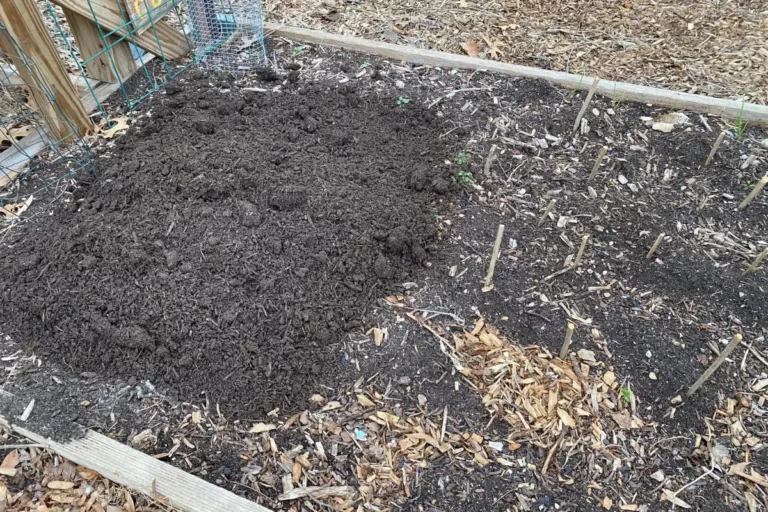50 Plants You Should Never Compost (and Those You Should)
As a longtime gardener, I’ve developed a deep appreciation for composting. It’s an amazing way to turn kitchen and yard waste into incredible (and free!) soil amendments.
However, I’ve learned that I need to be selective in what I toss into my compost bin, as some plants can introduce problems into my garden rather than benefits.
Certain plants should rarely, if ever, be composted, such as perennial weeds with tenacious root systems or aggressive invasive species. Harmful or toxic plants and any plants previously subjected to chemical pesticides should never be composted. When in doubt, always err on the side of caution.
However, please note that not all plants are suitable for composting. Certain plants can actually do more harm than good in a compost pile.
In this article, here’s what I’m going to cover:
- an overview of the many plants that shouldn’t be put in the compost.
- a review of solarization and how you can use it to kill off weed seeds, aggressive grasses, and invasive species.
- insights into hot composting and how you compost some of the most troublesome weeds and invasive plants if your compost pile gets hot enough.
- a comprehensive list of garden plants that are perfectly suitable for composting.
- some final thoughts on why you should never compost chemically-treated plants.
By the end, you’ll be well-equipped to keep your compost bin thriving while avoiding any potential pitfalls. Let’s get started!!
What Plants Are Not Suitable for Composting?
Composting is my favorite way to recycle kitchen scraps and yard waste and improve the soil in my garden beds. But you’ve got to be careful when it comes to composting weeds and grasses.
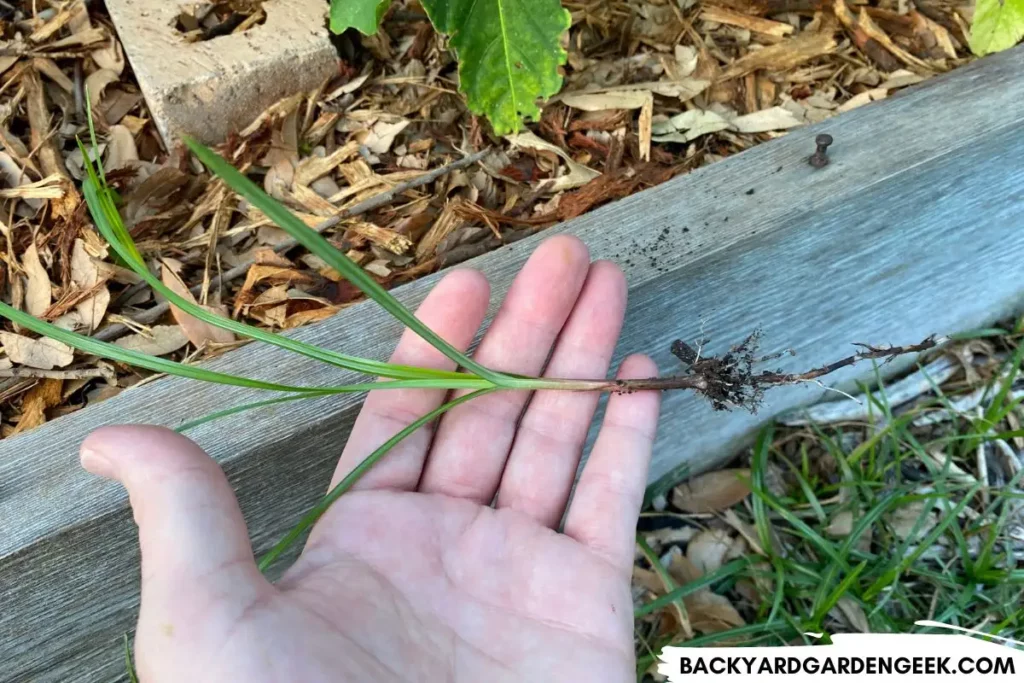
They could be invasive species that rapidly spread, choking out other plant life. Or they might carry diseases or pests that could infect your compost pile and subsequently your garden.
Some plants are toxic while others may have even been treated with chemicals that don’t break down easily and could contaminate your compost.
Let’s take a quick look at each of these:
- Perennial Weeds and Invasive Species: Weeds and invasive plant species can rapidly spread and dominate your garden. Composting such plants can encourage their spread, as their seeds or plant parts can survive the composting process and regrow.
- Plants with Diseases or Pests: Composting diseased plants or plants infested with pests can be risky. Diseases and pests can survive the composting process and infect your garden when you use the compost.
- Harmful or Toxic Plants: Some plants are naturally harmful or toxic to humans or pets and should always be excluded from your compost pile.
- Plants Treated with Pesticides or Herbicides: If you’ve treated your plants with pesticides or herbicides, avoid composting them. These chemicals can linger in the compost, potentially harming beneficial microorganisms or contaminating your garden when you apply the compost later on.
To give you a sense of what exactly you should keep out of your compost, here’s a list of 50 plants that you’ll want to trash, not compost:
| Plants | Why You Shouldn’t Compost Them |
|---|---|
| Bermuda Grass | A persistent perennial weed that can regrow from tiny pieces of root. |
| Bindweed | A fast-spreading vine with a deep root system that survives composting. |
| Bittersweet Nightshade | A perennial weed with toxic berries and resilient roots. |
| Black Walnut | This weed tree produces juglone, a compound harmful to many other plants. |
| Broadleaf Plantain | A common weed with seeds that can survive composting. |
| Buckthorn | An invasive shrub that can quickly take over natural areas and regrow from root fragments. |
| Canada Thistle | A tough perennial weed that can regrow from fragments of root. |
| Crabgrass | This annual weed produces thousands of seeds that can survive composting. |
| Creeping Buttercup | A persistent perennial weed that can regrow from root fragments. |
| Creeping Charlie (Ground Ivy) | This spreading weed can regrow from stem fragments. |
| Dandelion | Dandelions have deep roots and seeds that can survive composting. |
| Dock | A weed with a deep taproot system and seeds that can survive composting. |
| English Ivy | An invasive vine that can regrow from stem fragments. |
| Field Bindweed (Morning Glory) | A perennial weed with an extensive root system that can survive composting. |
| Garlic Mustard | An invasive plant that can spread rapidly through its many seeds. |
| Goosegrass | A relative of crabgrass, goosegrass produces many seeds and can re-grow from root sections. |
| Goutweed | Also known as Bishop’s weed, this plant is extremely invasive and can spread from small pieces of root. |
| Horse Nettle | A toxic plant that can harm humans and animals if ingested. |
| Japanese Knotweed | A highly invasive plant that can regrow from root fragments. |
| Johnsongrass | A persistent weed with rhizomes that allow it to spread underground. |
| Kudzu | This invasive vine can smother other plants and regrow from stem fragments. |
| Lesser Celandine | This plant forms bulbils (tiny bulbs) that can survive composting and produce new plants. |
| Milk Thistle | Its seeds can survive composting, leading to more weeds in your garden. |
| Mugwort | This invasive weed can spread via seeds and root fragments. |
| Nutsedge | This weed has tubers, or nutlets, which can survive composting and grow new plants. |
| Oleander | A toxic plant that can harm humans and animals if ingested, oleander has no business in your compost. Just trash it! |
| Oxalis | This plant’s hardy bulbs can sprout long after composting. Keep them away from your compost! |
| Peppers | Pepper plants are susceptible to pest-borned diseases. Plants with diseased foliage should be tossed in the trash bin, not the compost pile. |
| Poison Ivy | Contains urushiol, which can cause severe skin irritation. |
| Poison Oak | Same as above. Contains urushiol, so it’s bad news. |
| Poison Sumac | Like poison ivy and oak, poison sumac will cause painful skin irritations. |
| Purslane | A weed that produces large quantities of seeds that can survive composting. |
| Purple Loosestrife | An invasive plant that can outcompete native species and form dense stands. |
| Quackgrass (Couch Grass) | This perennial weed can regrow from small pieces of root. |
| Ragweed | Composting this somewhat invasive plant can spread its allergenic pollen. |
| Sorrel (Red & Yellow Varieties) | A perennial weed with resilient roots that could potentially survive composting. |
| Stinging Nettle | Although it can be beneficial in certain cases, its stinging hairs can be a nuisance, and its roots and seeds are quite resilient. |
| Russian Thistle (Tumbleweed) | Its seeds are notoriously durable and can survive the composting process. |
| Spurge | This weed’s roots and seeds can survive the composting process. |
| St. John’s Wort | Known to be invasive in some areas, it can spread from seeds and root sections. |
| Tomatoes | Tomato plants are highlys susceptible to a variety of plant diseases that can be spread during the composting process. |
| Tree of Heaven | This invasive plant can propagate from its seeds and root fragments. |
| Trumpet Vine | This vigorous plant can sprout from root fragments. |
| Velvetleaf | Velvetleaf produces an abundance of seeds that can remain viable in the soil for many years. |
| White Clover | This plant can reproduce through its stolons. |
| Wild Garlic | The bulbs of this plant are persistent and can sprout new plants. |
| Wild Violet | This pretty, but aggressive weed spreads by underground rhizomes which can survive in compost. |
| Witchweed | This parasitic plant can spread through its tiny seeds. |
| Wisteria | This beautiful vine can become invasive, with seeds and roots that survive composting. |
| Yellow Archangel | This plant have pretty flowers, but it can regrow from stolons, becoming a perennial problem. |
Remember, the key factor with many of these plants is that their various survival mechanisms—whether seeds, roots, or other plant parts—can often withstand the composting process and potentially cause an outbreak in your garden when you use the compost.
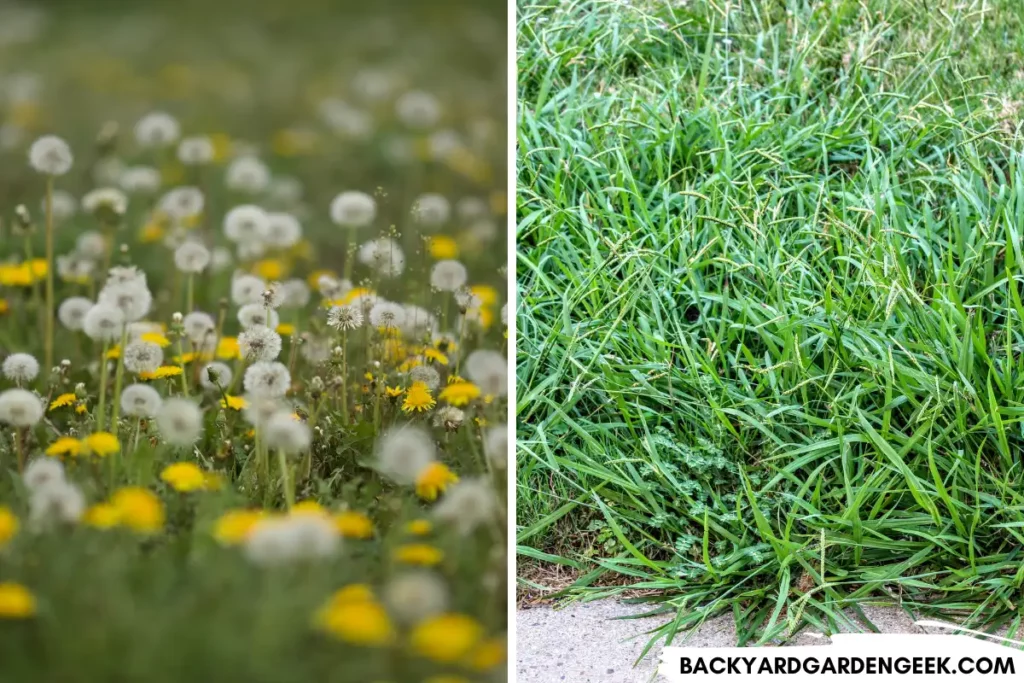
In other words, always be mindful of what goes into your compost pile!
Now that I’ve given you the general overview, I’d like to share some thoughts on 2 things you can do to compost most anything: solarization and hot composting.
Using Solarization to Kill Weeds, Grasses, and Invasive Plants
One thing you can do if you’d like to compost almost everything (but be careful doing so) is to practice solarization prior to composting.
Solarization uses the heat of the sun to kill the seeds, pests, and even some pathogens. It’s especially useful for materials that you’d typically avoid putting in your compost pile, like invasive weeds and diseased plants.
Here’s a step-by-step guide on how to solarize plant material:
- Gather Your Materials: To start with, you’ll need black plastic bags or plastic specifically designed for solarization.
- Prepare Your Plant Material: Collect the weeds, grasses, or other plant material you want to solarize. Make sure the plant material is somewhat moist. This helps heat spread evenly and accelerates the process.
- Solarize Your Plant Material: Put the moist plant material into black plastic bags or, if you’re dealing with a larger area, spread solarization plastic over any weeds or grasses you want to kill. The plastic should be in direct contact with the plant material or soil. Make sure to seal the plastic tightly to trap heat.
- Wait for Solarization to Occur: The length of time you need to wait depends on the outdoor temperatures and the intensity of sunlight. Generally, you need at least 4-6 weeks of consistent hot weather, with temperatures ideally reaching 95°F (35°C) or more outside. Solarization works best in the summer.
- Check Your Progress: After 4-6 weeks, check the status of your plant material. It should be completely dead and starting to decompose. If not, give it more time.
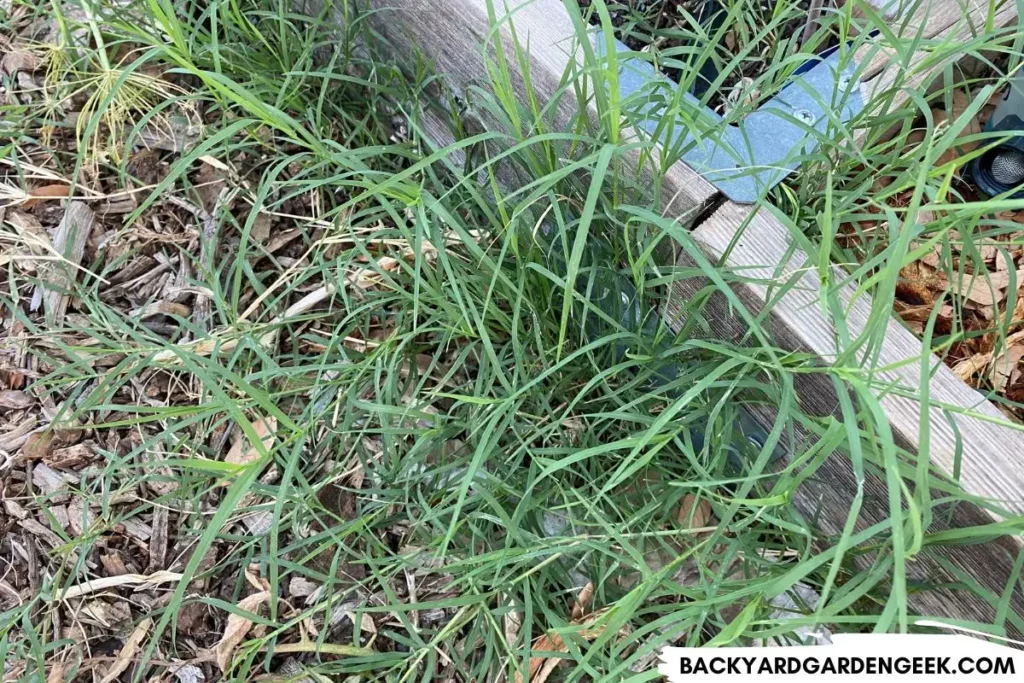
Using solarization, you can safely add all kinds of weeds and invasive plant material to your compost pile that you would have otherwise avoided, expanding the range of organic matter you can recycle into nutrient-rich compost.
If you’re uninterested in the time and energy it takes to solarize but happen to have a hot compost pile on your property, you’re in luck! Let’s look at why hot compost piles can also work wonders on tough-to-manage plants.
How Do I Make My Compost Hot, and Why Is That Important?
While hot composting may sound intimidating, it’s all about managing your compost pile efficiently to kill weed seeds and pathogens.
The goal of hot composting is to achieve high temperatures without overheating the pile, so here are some tips for creating a successful hot compost pile and staying safe in the process.
The Basics of Hot Composting
First, let’s delve into the basics of hot composting, which involves three primary components: a proper balance of green and brown materials, the right size compost pile, and regular turning.
- Green and Brown Balance: Striking the right balance between green (nitrogen-rich) and brown (carbon-rich) materials in your compost pile is crucial. Aim for a ratio of about 3:1 browns to greens. Browns include items like leaves, straw, and paper, while greens include kitchen scraps, yard waste, and grass clippings.
- Size Matters: The size of your compost pile can significantly affect its ability to heat up. A compost pile should be at least 3x3x3 feet (1 cubic yard) to retain heat but no more than 3-4 cubic yards as this can make it difficult for the center to get enough oxygen, making your compost pile a potential fire hazard.
- Turning Regularly: Turning your compost pile helps distribute heat evenly and introduce oxygen, which aids in the decomposition process. Turn your compost pile every few days to help it heat up.

Safety Tips for Hot Composting
While hot composting is generally safe, you should take a few precautions:
- Monitor the Temperature: Keep an eye on your compost pile’s temperature using a compost thermometer. The pile should heat up to between 130-160°F (54-71°C) to effectively kill weed seeds and disease pathogens. However, be cautious if the temperature surpasses 170°F (77°C), as it could pose a fire risk. If this happens, you should turn the pile and add some water to cool it down.
- Placement: Don’t place your compost pile near flammable structures or dry vegetation, as you could accidentally start that way if it becomes too hot.
- Water Management: Keep the compost pile as wet as a wrung-out sponge. Too much water can cool the pile while too little can prevent it from heating up.
Tips to Heat Up a Cold Compost Pile
If you have a compost pile that’s failing to heat up, here are some tips to help it along:
- Turn More Frequently: Turning the compost pile more often can introduce more oxygen, which the decomposing organisms need to do their work.
- Add More Green Materials: If your pile is too high in browns, it may not heat up. Add more green materials to increase the nitrogen level and stimulate the composting process.
- Check Moisture Levels: If your pile is too dry, add water until it’s about as wet as a wrung-out sponge.
- Make Your Pile Larger: If your compost pile is too small, it’ll never heat up properly. Expanding the size of the pile can increase the likelihood of it heating up.
Remember, hot composting is a more hands-on approach than cold composting, but it’s much more effective at killing off stubborn weeds, invasive plants, and plant diseases.
Which Garden Plants Can Go in My Compost?
Unlike the weeds and invasive plants I’ve noted above, the vast majority of plants make great compost material. They add vital organic matter, contributing to a balanced mix of green (nitrogen-rich) and brown (carbon-rich) materials in your compost pile.
This balance accelerates the composting process and boosts the nutrient content of your final compost.
Here’s a list of those commonly-found plants that are typically safe for your compost pile:
- Apple trimmings
- Apricot pits
- Asparagus ferns
- Avocado skins and pits
- Banana peels
- Basil
- Bean stalks
- Beet greens
- Bell pepper cores
- Blackberry brambles
- Broccoli leaves and stems
- Brussels sprout stalks
- Cabbage leaves
- Carrot tops
- Cauliflower leaves
- Celery leaves
- Cherry pits
- Cilantro
- Corn cobs
- Cucumber vines
- Dandelion leaves (but not the seeds!)
- Eggplant skins
- Fennel fronds
- Fig leaves
- Garlic stems
- Grapefruit rinds
- Green bean plants
- Horseradish leaves
- Kiwi skins
- Lemon rinds
- Lettuce leaves
- Mango pits
- Nectarine pits
- Onion skins
- Orange peels
- Pea vines
- Peach pits
- Pear cores
- Pepper plants (only if you’re 100% sure they’re not diseased)
- Plum pits
- Potato plants
- Radish leaves
- Spinach stems
- Squash vines
- Strawberry plants
- Thyme stalks
- Tomato plants (only if you’re 100% sure they’re not diseased)
- Turnip greens
- Watermelon rinds
- Zucchini plants
Whether you’re dealing with weeds and invasive plants or the kinds of plants that do great in compost piles, composting is an ongoing learning process.
You’ll soon discover what decomposes well in your compost pile and what doesn’t…and what plants to keep far, far away from your compost!
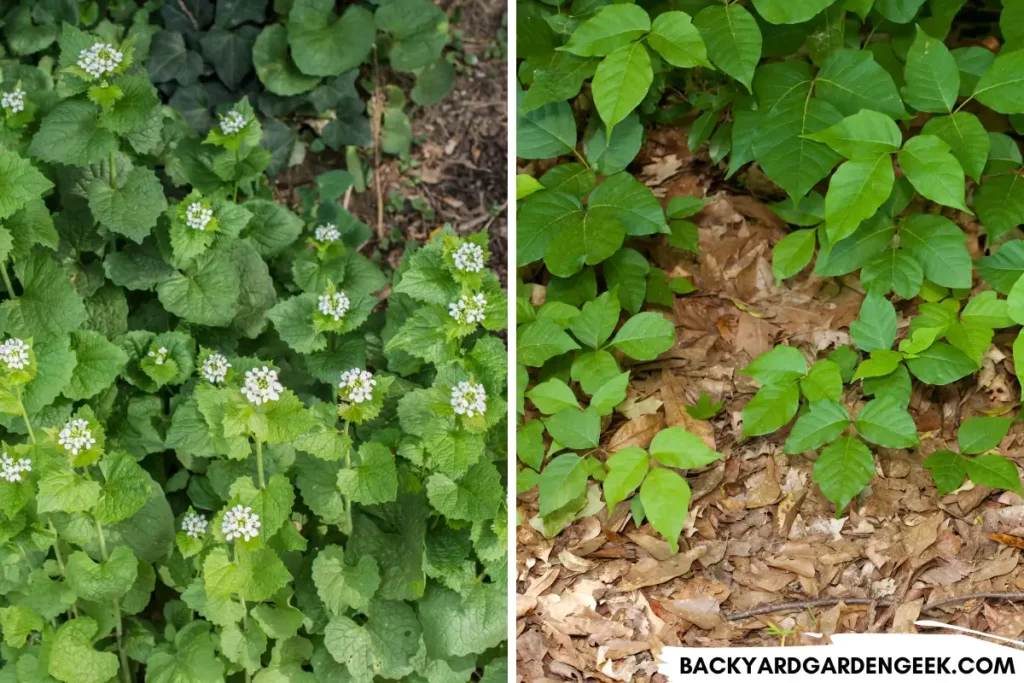
I hope this article has give you a better sense of what to do and what mistakes to avoid. Good luck as you work to turn your kitchen scraps and yard waste into next year’s garden soil!
Additional Information
If you like learning about compost, I think you’ll enjoy these related articles:
- Composting Pizza Boxes: A Simple, Step-by-Step Guide
- Don’t Compost These Weeds (30+ Plants to Avoid)
- Is Your Leftover Pizza Compost-Friendly?
- Can You Put Bark or Mulch in the Bottom of a Raised Bed?
- Do Raised Beds Need Yearly Compost? (Here’s What to Do)
- Filling Raised Beds with Just Compost: Should You Do It?
- Using Topsoil in Raised Garden Beds: Can You Do It?
- What Do You Put on the Ground Around Raised Beds?



